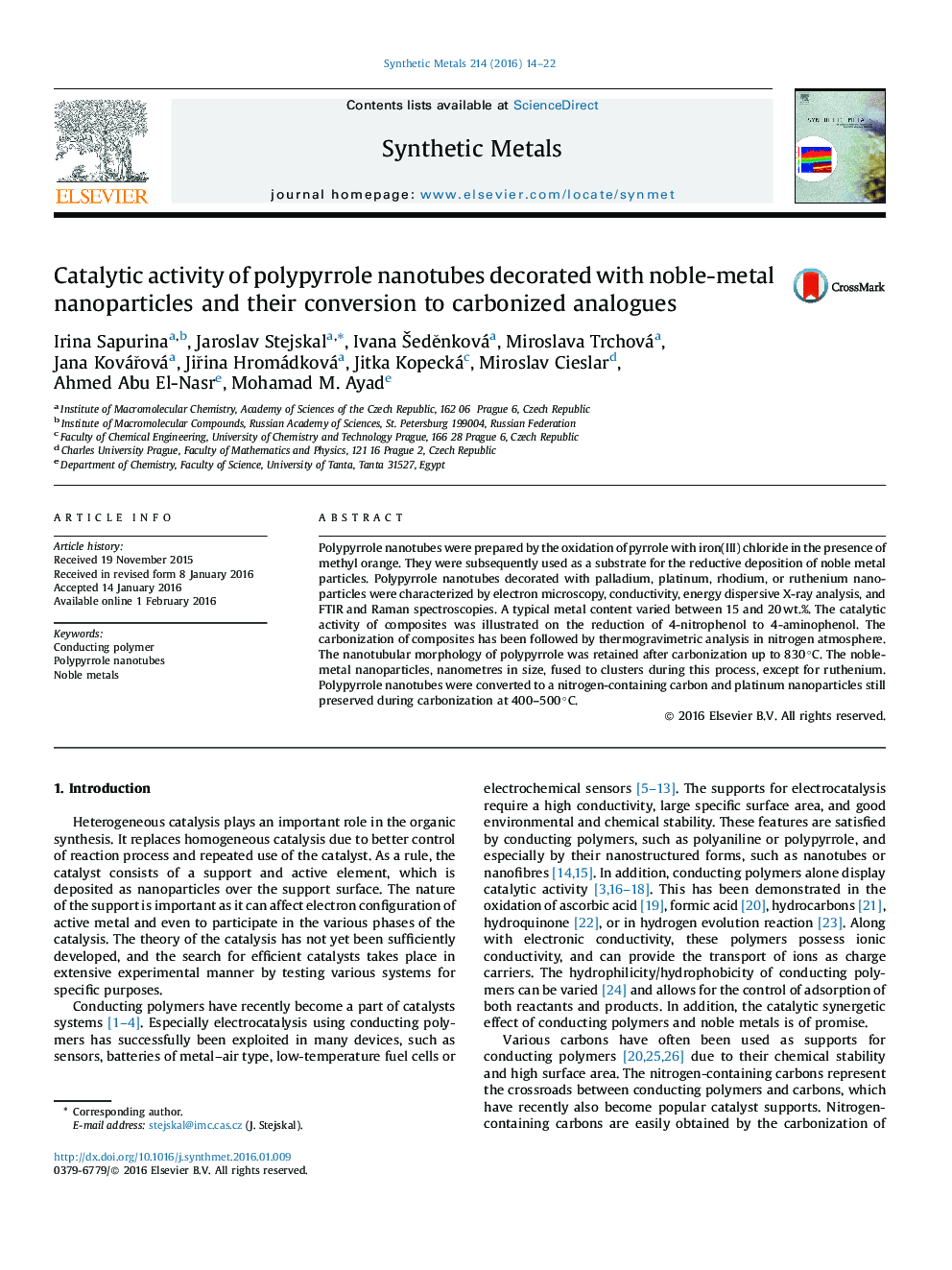| Article ID | Journal | Published Year | Pages | File Type |
|---|---|---|---|---|
| 1440228 | Synthetic Metals | 2016 | 9 Pages |
•Polypyrrole nanotubes can be decorated with noble-metal nanoparticles.•Platinum, palladium, ruthenium and rhodium nanoparticles have been tested.•Hybrid composites calatyse the reduction of 4-nitrophenol to 4-aminophenol.•Polypyrrole nanotubes are converted to analogous nitrogen-rich carbons.•Platinum nanoparticles do not agglomerate during carbonization below 500 °C.
Polypyrrole nanotubes were prepared by the oxidation of pyrrole with iron(III) chloride in the presence of methyl orange. They were subsequently used as a substrate for the reductive deposition of noble metal particles. Polypyrrole nanotubes decorated with palladium, platinum, rhodium, or ruthenium nanoparticles were characterized by electron microscopy, conductivity, energy dispersive X-ray analysis, and FTIR and Raman spectroscopies. A typical metal content varied between 15 and 20 wt.%. The catalytic activity of composites was illustrated on the reduction of 4-nitrophenol to 4-aminophenol. The carbonization of composites has been followed by thermogravimetric analysis in nitrogen atmosphere. The nanotubular morphology of polypyrrole was retained after carbonization up to 830 °C. The noble-metal nanoparticles, nanometres in size, fused to clusters during this process, except for ruthenium. Polypyrrole nanotubes were converted to a nitrogen-containing carbon and platinum nanoparticles still preserved during carbonization at 400–500 °C.
Graphical abstractFigure optionsDownload full-size imageDownload as PowerPoint slide
